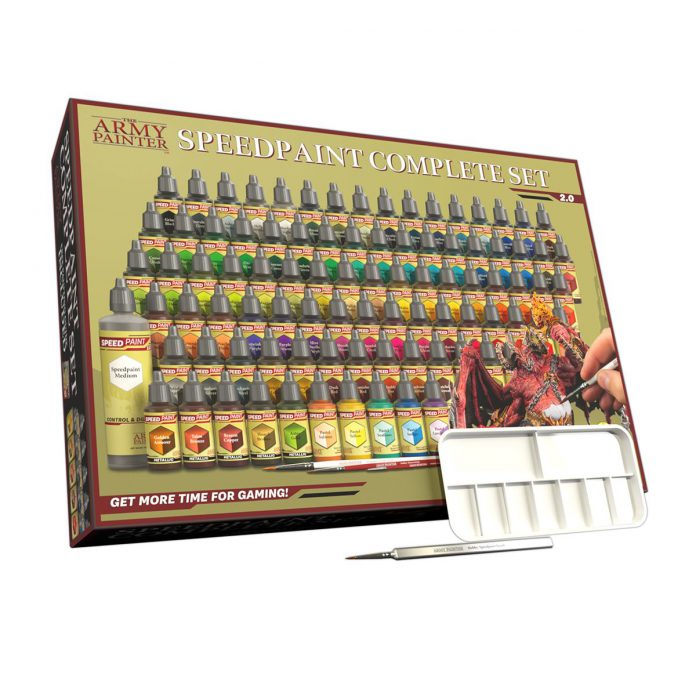The Army Painter provided various Goonhammer painters with sets of Speed Paints for the purposes of this review.
If you’re plugged into hobby social media at all you’ve surely heard of The Army Painter’s Speedpaint line. They released hot on the heels of Citadel’s industry-shaking Contrast line, promising to provide a similar one-coat experience. We here at Goonhammer have been using them for quite some time, and figured it was high time we shared our thoughts and favorite paints.
You’ll note the headline said Speedpaint 2.0; there are in fact two entirely separate lines of Army Painter Speedpaints. The original line, which I will refer to as 1.0 despite it being marketed and sold with no numerals, was released to mixed reviews. While it did offer a one-coat experience, users reported issues with reactivation. Initial coats could reactivate and blend with new colors up to 24 hours after initial application. While this property can be used by experienced painters to create interesting effects or for ease of wet blending, it makes it hard for new painters to pick up and quickly get through an army.

The good news is that the 2.0 line has completely done away with that issue. Speedpaint 2.0 boasts an entirely new formulation that does not reactivate once dry and thus is much easier to use. As soon as one color dries you can move right on to the next one, quickly painting models to tabletop standard in under an hour.
If you would like a more detailed tutorial you can check out our Hobby 101 article on one-coat paints, but the basic gist is simple. Prime your models in bright white, or a bright zenithal shade, and you’re ready to go. A single coat of Speedpaint right out of the bottle will give you clean coverage and a range of highlights and shadows.
The new formulation flows easily into recesses and offers enough drying time that you can move it around to prevent pools. Unlike Contrast paints, which all behave a little differently, I found the Speedpaint line to be consistent in both viscosity and coverage. While there are lighter and darker colors, the paints themselves all behave the same way as I move them from bottle, to palette, to brush, to model. This alone saves time and made it easy to get up and running.
While I have not personally experienced this issue, I have seen reports of Speedpaint 2.0 developing cracks as it dries. It’s caused by uneven drying so the best ways to avoid this are to allow your primer 24 hours to fully cure, not let the Speedpaint collect in excessively deep pools, and let them air dry. Do not use a blow dryer!
Apart from that concern, we’ve got no complaints with this new reformulation. They’re easy to use, work exactly as advertised, and boast rich saturation and good coverage. They also work fantastically in an airbrush right out of the bottle as a tint or diluted with Speedpaint 2.0 Medium as a glaze (make sure you use 2.0 Medium with 2.0 paints).
With those general thoughts out of the way, here’s some of our painters with some favorite colors and experiences.
Raf Cordero
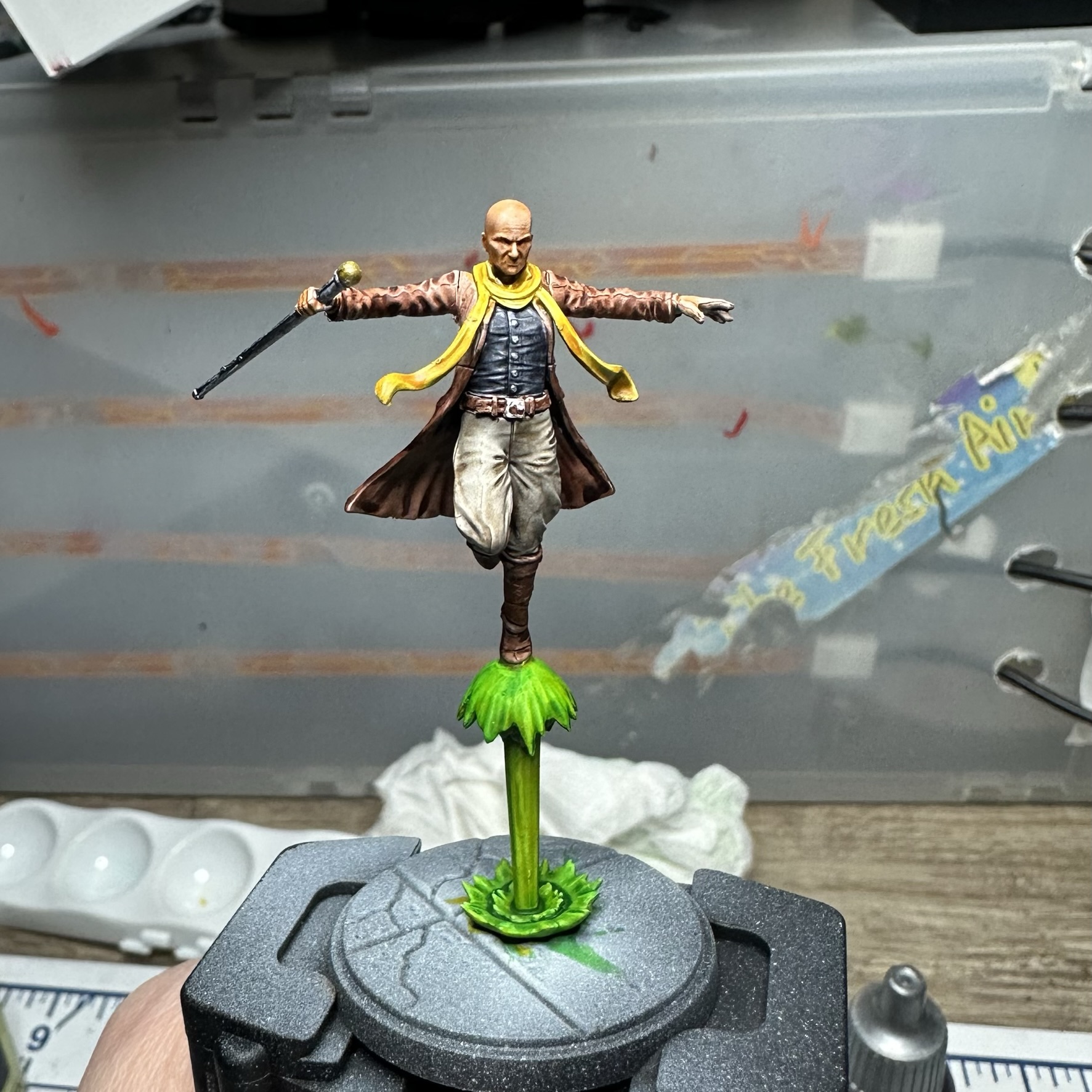
Cassandra Nova from Marvel Crisis Protocol was painted entirely with Speedpaint 2.0, over a light zenithal prime. My favorite effect is her khaki pants which were actually painted with a color called “Bony Matter”. This color has become my most used bottle in the 2.0 Mega Set; it’s super versatile. It naturally does bone well, but it does dirty fabrics, buildings, and when watered down can be used to weather things easily.
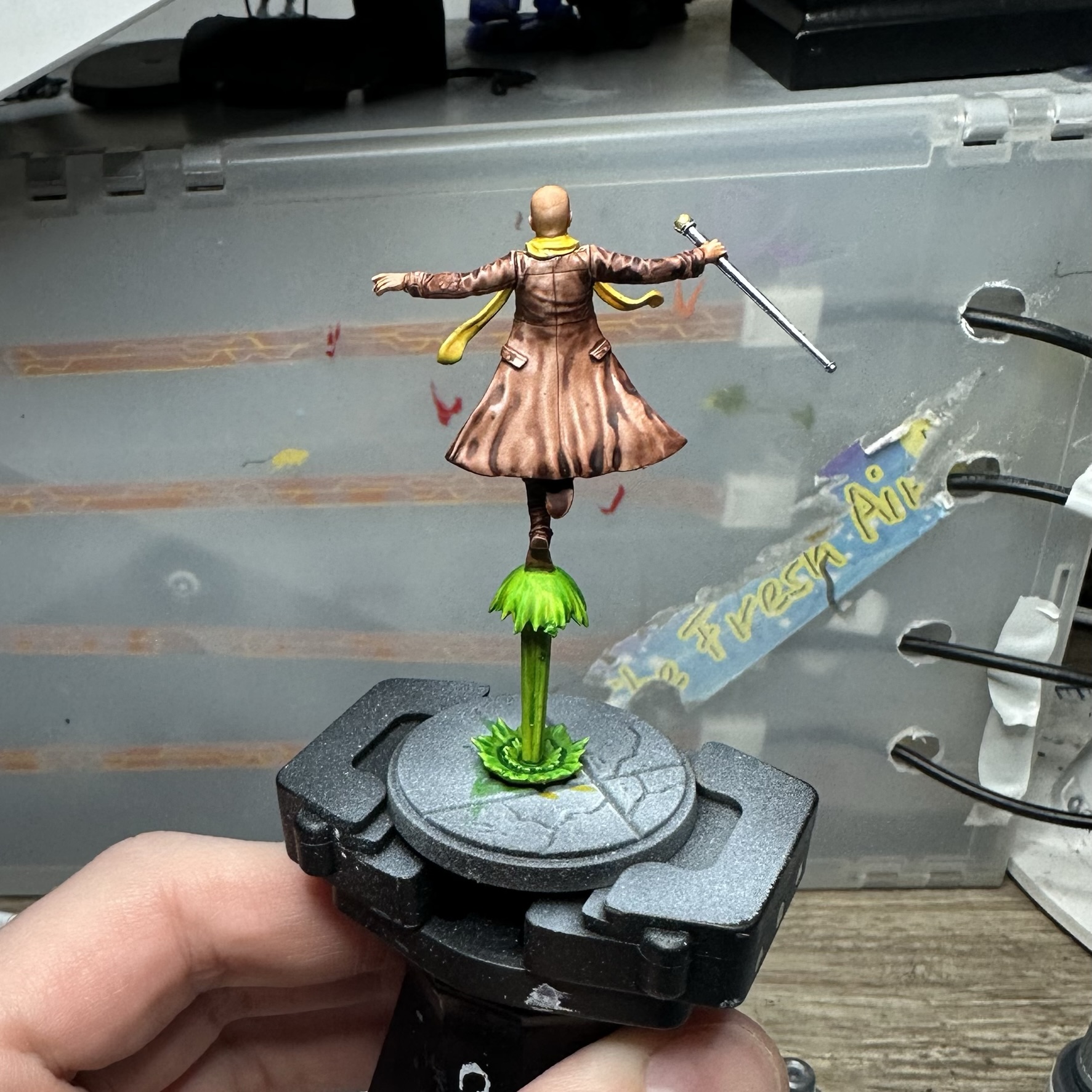
Satchel Brown also offers a nice rich color for leather, in a clean brown that does not have the orange tones of Citadel’s Snakebite leather. In particular, Satchel Brown clings to the edges of flaps, straps, and other bits in a way that adds a natural easy blackline. The green energy effect was achieved by lightly glazing Shamrock Green over Maize Yellow, and is the only element of this model painted with 2 colors.
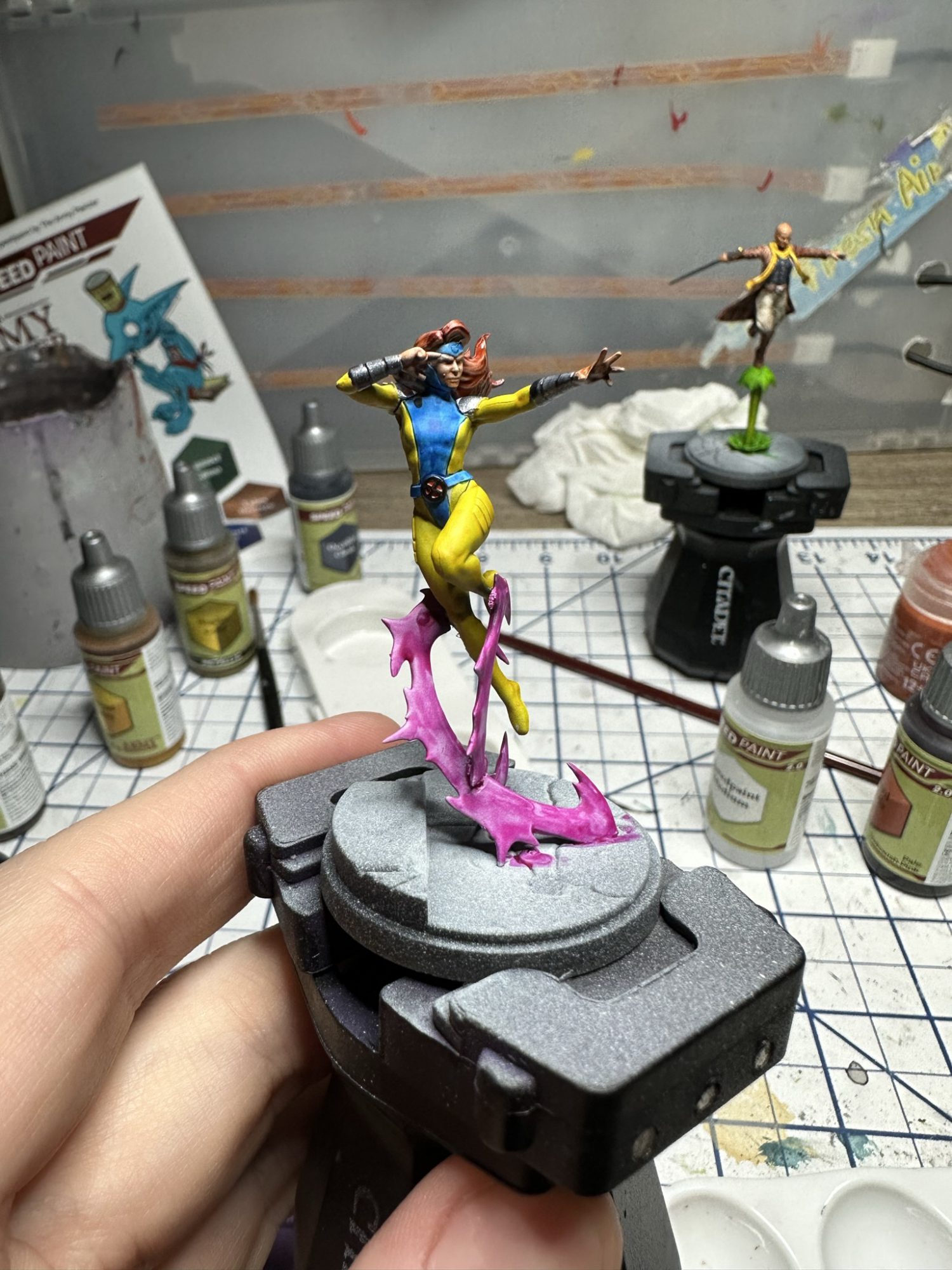
Maize Yellow is another favorite color of mine. Yellow is notoriously difficult to paint, and Maize Yellow feels like cheating.
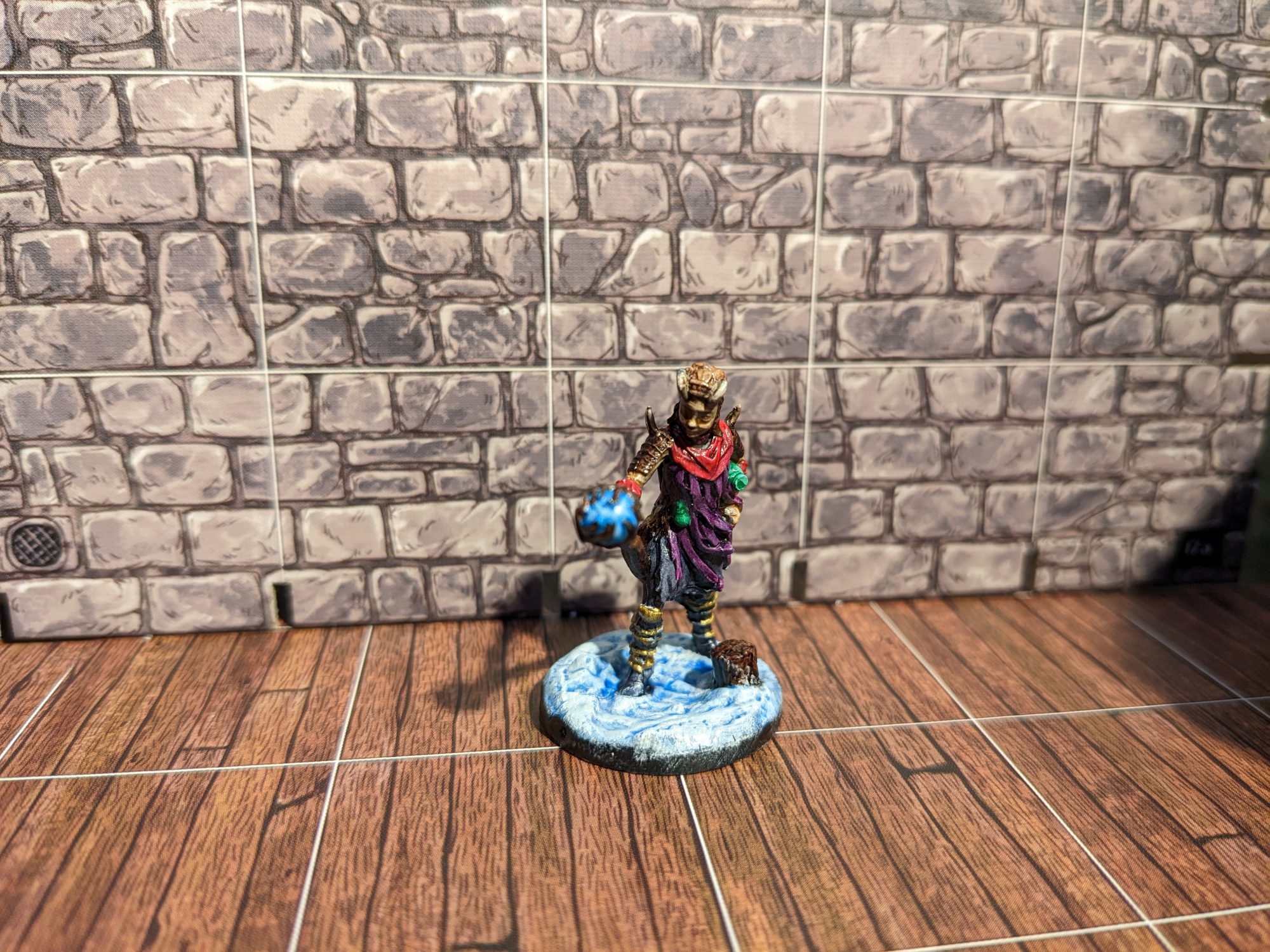
As seen in the Duskwalker’s pants and Cassandra Nova’s shirt above, Occultist Robes has become another go-to paint. It is a deep, near-black blue, that is perfect for robes and dark clothing. I’ve also used it to good effect on the black rubber seals present on Space Marine and Clone Trooper armor. You can either use it as is or give it a proper highlight with a more bluish color that will play off the Speedpaint tones well.
Chase “Gunum” Garber
Well Hi everyone, but you didn’t expect to see me in one of these!!! I’ve been incredibly slammed with the school year, but that made the Speed Paints a welcome addition to my life. I have three examples for you today: Two completed and one that still needs a little TLC that I’m excited to share.
As someone who doesn’t paint often or with much variety, I found Speedpaints 2.o to be a very nice change of pace compared what I’m used to using with the Citadel paints. I did have to use a lot of paint on my brush, and we had to make sure to paint over a white base. With a heavy coat over the models, it was very easy to create some really impressive results.

Before the summer ended, I had the pleasure of winning a GT in Duluth, MN, and that was done partially due to these brand-new models I had gotten painted up. I was only able to get those done thanks to the beauty of the speed paints here. My Psychophage is painted with about four or five primary colors, starting with the Bony Matter paint. The flesh of the tentacles was done with the Goddess Glow paint, which honestly was something I was kind of gambling with and experimenting with, but I was incredibly happy with how that turned out.


Next, I had my brand-new HQ addition to my list, the Nerotyrant, and with that, my love of Goddess Glow really came through. The speed paint does an amazing job with its color and simplicity, and I didn’t feel any need to use a wash over the paint I was already using. Again, I used the Bony Matter paint, and then I moved into using the Raging Sea paint for the brain matter. For the pipeing that is on the base, I used the Ashen Stone paint which again, was amazing with its coverage.
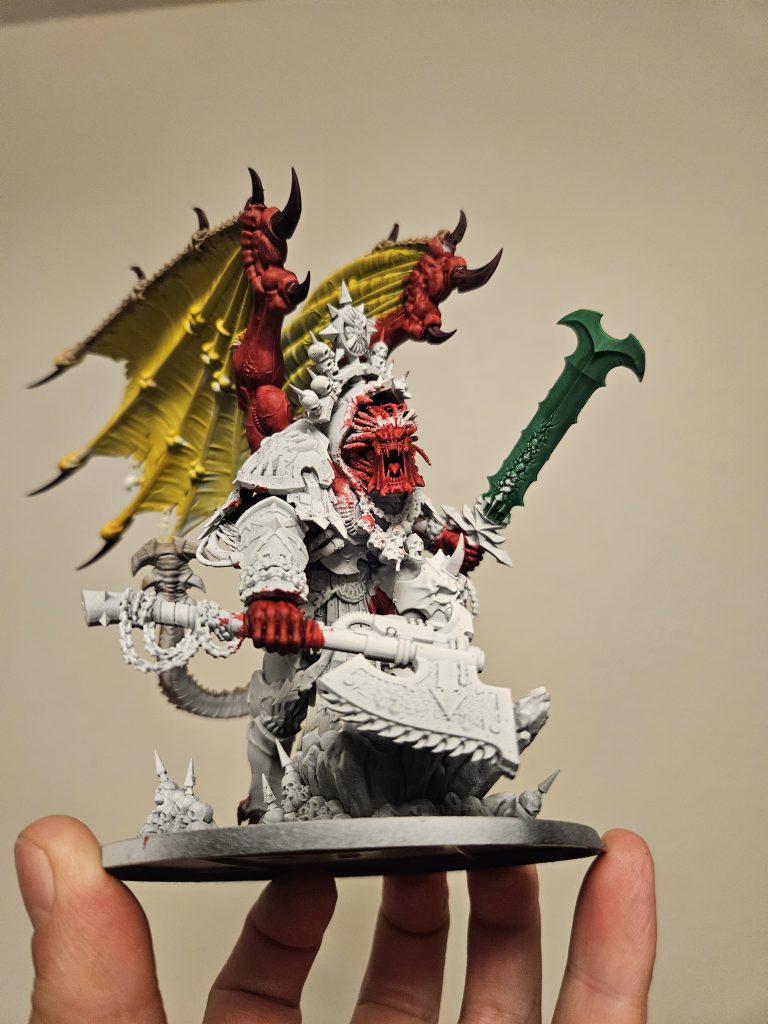

Some of you may already know that I’m a big fan of World Eaters, right after my love for Dark Angels and Tyranids. I have been associated with World Leaders for a long time, but I could never convince myself to play Angron on as he was not good in the 9th edition. However, his time in 10th edition is just around the corner. With all the buzz we’ve seen, I have finally begun to take time to build and paint this magnificent model. As you can see, he’s still a work in progress, and I am taking unique pathways with this painting style. But before he even got close to being finished, I wanted to show off some of the different things I was doing here.
First off, you’ll notice his wings are loud and announcing his bloody pressence. At first, I thought this was going to be a bit overpowering but as I put the paint on, I enjoyed the color more and more. Maize Yellow made painting one of my most hated colors a breeze, and it was applied so evenly that I can’t imagine using something else. For the bone of the tail and his wings, you’ll notice my beloved Bony Matter paint at work again. His skin I was planning on using Khorne Red, but then I saw the Slaughter Red paint decided to give it a go. It’s dark and easy to look at, a great color for his skin. His weapons I’m still trying to decide on, but i landed on the Forest Sprite green to start the glow of his Daemonic Sword.
“Mild”Norman Greeberg
Since receiving these paints I’ve started using them as a permanent fixture in my painting toolbelt. The range is very flexible and offers a variety of colors and hues that are difficult to find in competing ranges. There are a couple that underperformed compared to other paints in the range so there’s some variance (Nuclear Sunrise and Glittering Gold stand out in my memory as colors I wish I had but the paints don’t quite behave properly) but its certainly worth exploring the range despite this for the colors that are straight magic in a bottle
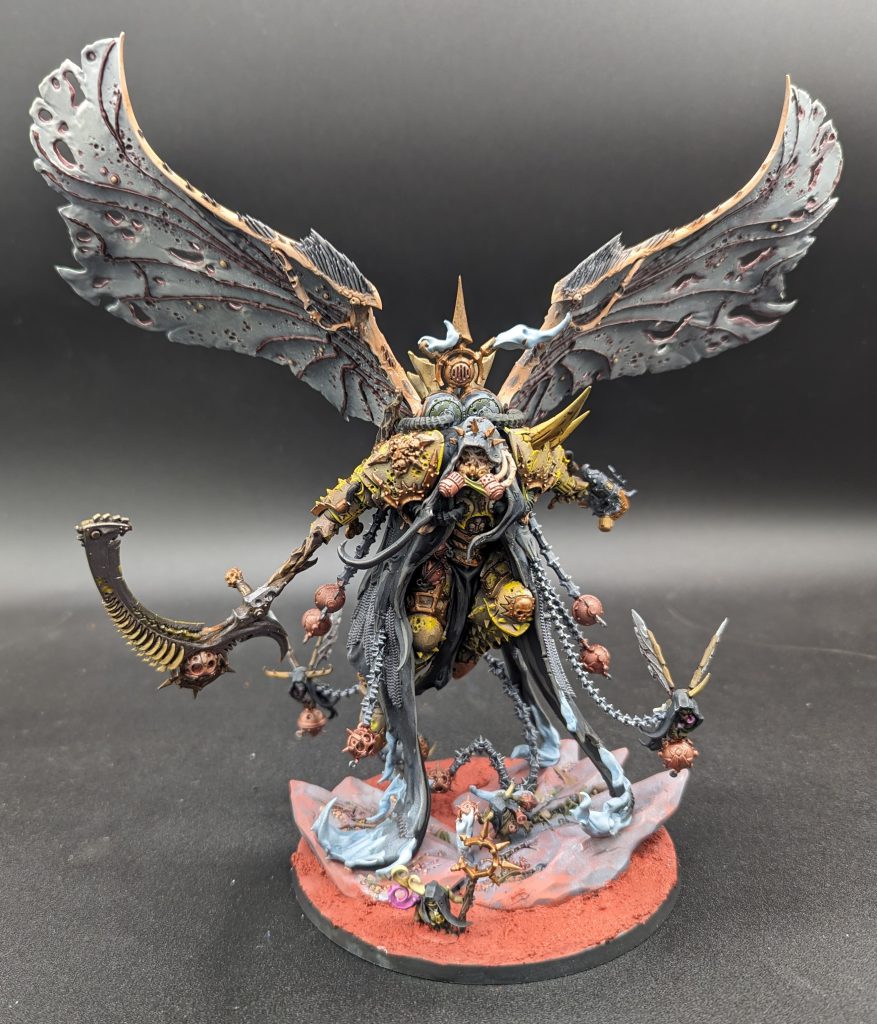
Recently I restarted my Death Guard scheme and knew I wanted my basecoat to use the new Speedpaints to help speed up my painting time. After some experimenting I landed on the above scheme. While it uses some standard acrylic paints to help in some areas, its almost all Speedpaint. The base armor color is Bony Matter (highlighted with Flash Gitz yellow). The cloak is Grim Black (highlighted with Skavenblight Dinge). The wings are Holy White (with a Vallejo Grey White highlight) with Dusk Red used for all the veins. All of the skin was done with Peachy Flesh (with a Rakarth Flesh drybrush). All the gunmetal was done using Enchanted Steel (with a Stormhost Silver highlight)
I could go on but I think you get the point. The all star, must grab paints used in this project were Bony Matter, which produces a grimy brown that behaves nicely and highlights well, Peachy Flesh, which offers a one coat Caucasian skin that works well when mixed with other paints, and Enchanted Steel, which is probably my favorite paint in the range since it provides a one coat dark metal that gets into recesses that are usually annoying to get into with a brush.
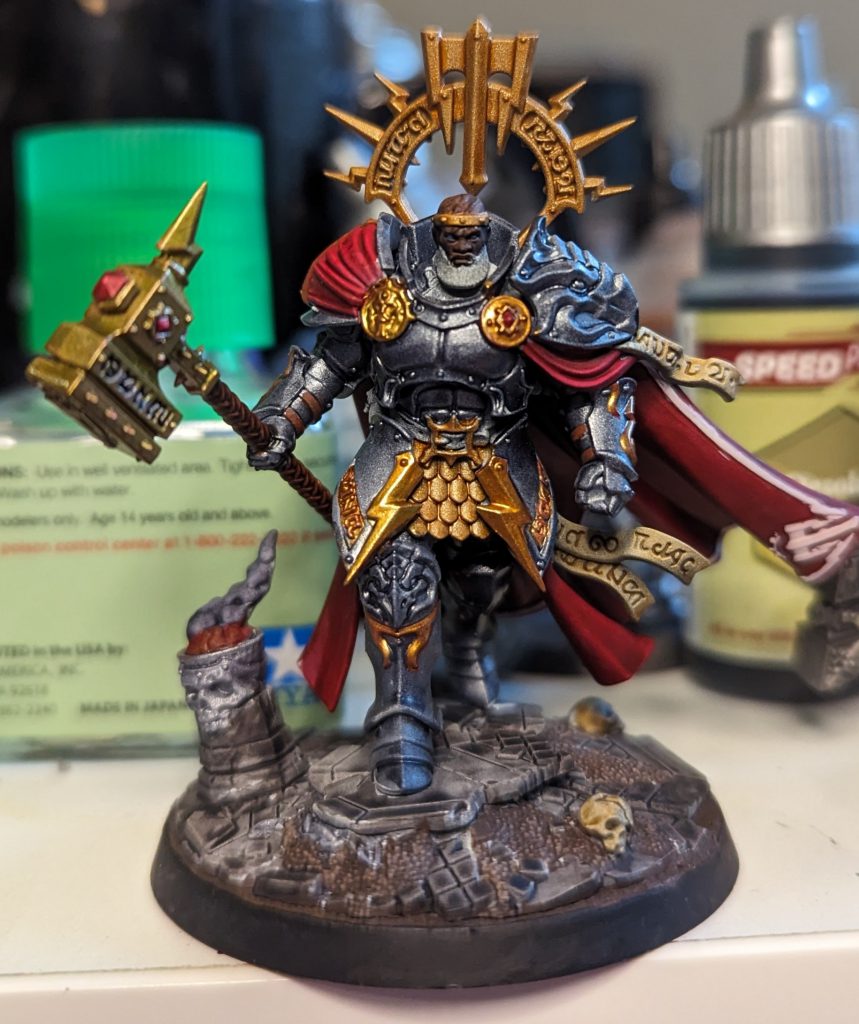
Speaking of the Speedpaint metallics, I painted up Bastian there in all Speedpaints shortly after getting them. The armor was done using Enchanted Steel, the gold with Golden Armor, the hammer is Aztec Gold and the skull uses Broadsword Silver. The metallic range is worth picking up on its own to say the least. Being able to quickly apply metallic paints over large areas and not having them look completely flat (although they still want a highlight) is a godsend.
Andrew “Pendulin” Haywood
I wanted to try something a bit different with Speedpaints. But before we get to that, let’s go with something traditional.
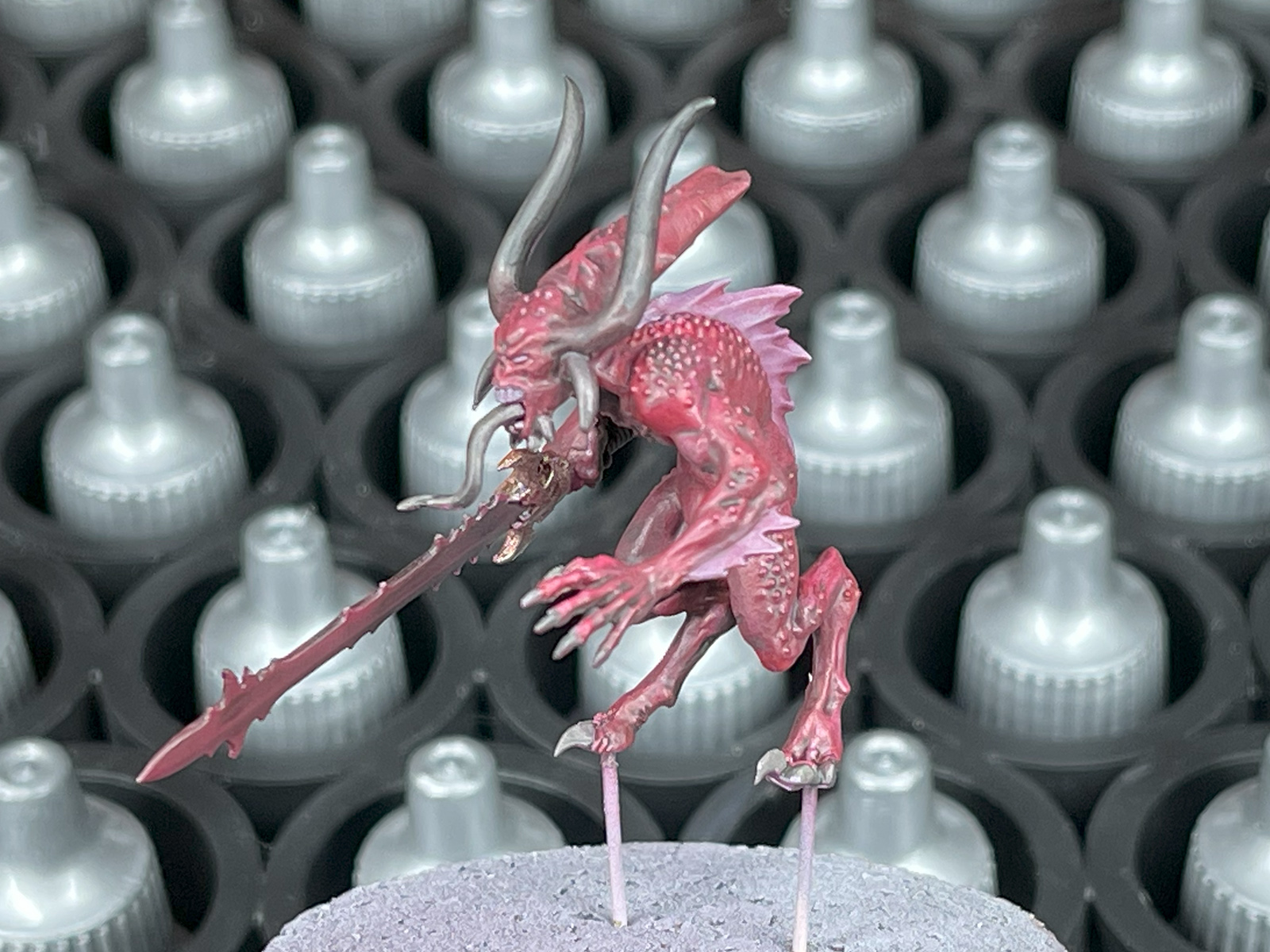
Nothing fancy here, just a good ol’ stabby Bloodletter. This guy is painted almost exclusively with just two colors. Slaughter Red all over, Noble Skin on the horn, tongue, and claws. And then a blend of both, along with a healthy dose of Speedpaint medium, to make a quick glaze for the whole model.
Really fast, and pretty good looking for the low, low effort.
But as soon as I got my hands on the Speedpaint dropper bottles, the first thought I had was “I bet I could airbrush with this.” And I gotta say I’m pretty happy with the results.

This was a handful of different colors: Murder Scene, Slaughter Red, Carmine Dragon, Nuclear Sunrise, and Noble Skin. Probably others too, as I wasn’t following any plan in particular. I was just grabbing the paints that looked about right, and trying stuff out.
You could easily slap this model on the table and call it good. However, I wanted to see how this model looked with just a little bit of traditional painting. A little drybrush here, a little brushwork there. Nothing fancy, just a couple minutes of effort, and here’s where I landed.
Pretty solid. All this doggo needs is some quick metallic work on the collar and you’d have yourself one mean looking puppy. Or you could use this as the base coat for a much larger project.
So where do I land with Speedpaints? They excel at the things they, well, excel at. They’re fast, they cover well, they go through an airbrush rather nicely, and there’s just about every color under the sun.
My only real complaint is that I had a couple blowouts while using them, launching the nozzle off the bottle, and pouring paint all over my palette. You see, each Speedpaint comes with a mixing ball inside it, which I would normally consider a big win. However, I think what happened is that, when turning the bottle over, the mixing ball formed a seal against the under-side of the nozzle. When a gentle squeeze didn’t give me that nice drop of paint I was looking for, I ketchup bottle’d it with a firm squeeze and shake, causing the nozzle to pop off.
I fully admit that fault lies entirely on my own dumb self. The easy fix is “don’t be an idiot”, but that hasn’t stopped me in the past. But I wanted to mention this regardless: if the Speedpaint doesn’t flow, don’t test your grid strength on it. Trust me.
So overall, if you’re looking for something to help bridge the gap between unpainted plastic and a model hitting the table, these are a solid pick.
Have any questions or feedback? Drop us a note in the comments below or email us at contact@goonhammer.com.
